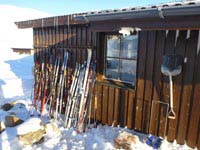
We love the snow at Nature Travels and, in addition to our wide range of dogsled tours, we offer many options for cross country skiing and ski touring. As an ecotourism company, we don’t offer any skiing that relies on lift networks, but have many exciting possibilities for cross country skiing, backcountry skiing and alpine peak touring.
But what’s the difference between the equipment used for these types of skiing? You’ll hear a number of terms used to describe the various types, and often these are used interchangeably or used in different ways depending on the country or context.
So here’s our guide to the types of skiing we offer in Sweden, Finland and Norway and the equipment used for each:
Cross Country Skiing:
When people talk about cross country skiing, they are generally referring to skiing on predominantly flat terrain, using thin skis and lightweight boots and usually skiing on prepared tracks. Considerable distances can be covered by experienced skiers.
This is the type of skiing featured on our Cross Country Skiing in Eastern Finland and Cross Country Skiing in Hossa and Kalevala experiences in Finland, which are tours between guest houses with luggage transfers. We also offer Discover Cross Country Skiing in Rondane in Norway, where you can choose between cross country skis or backcountry skis depending on your preference.
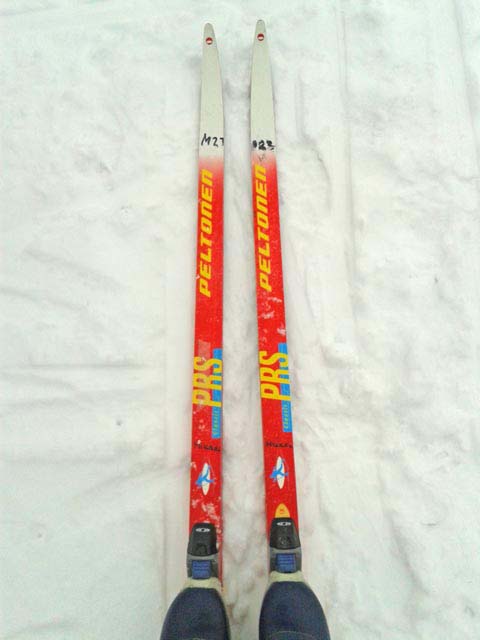
This is “classic” cross country skiing, where the legs move in a backwards and forwards motion similar to walking and, if skiing on prepared tracks, these will be parallel grooves.
There is also “skating” technique, where skis go out diagonally to the sides in a skating motion. This technique requires specially-prepared tracks different from the “classic” technique and skis which are stiffer and shorter than “classic” skis.
Though not a type of skiing as such, “forest skis” are very popular in the Nordic countries as an ideal way of moving through the winter landscape (especially in deeper snow) and are commonly featured at our Winter Active Accommodation experiences as equipment for self-guided tours in the surrounding area. These are wider/heavier and not as sophisticated as “proper” cross country skis, and have bindings which are used with normal winter boots rather than special cross-country ski boots.
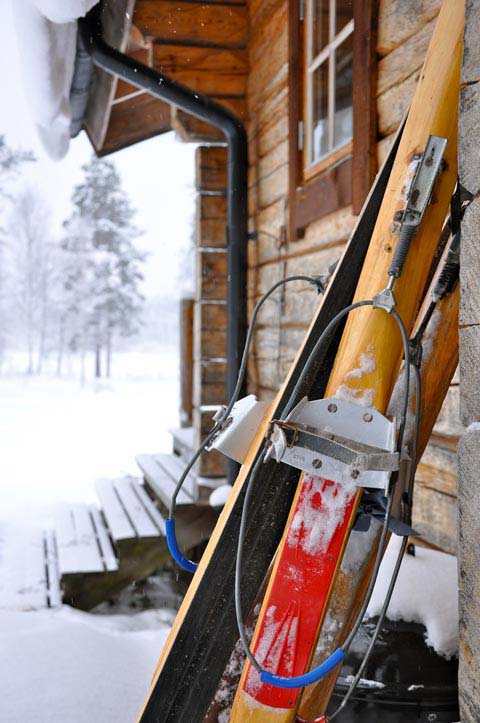
For extended tours and also with bindings suitable for use with any winter boot, OAC Kar skis are short and broad and are ideal for touring on flattish terrain when you are pulling a pulk and are easy to use for those with limited skiing experience.
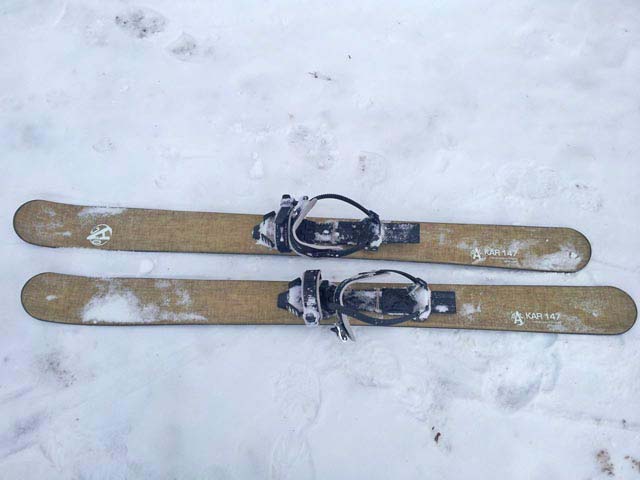
Backcountry Ski Touring:
The terms “ski touring” and “backcountry skiing” are often used loosely to refer to different types of skiing, which can be confusing.
The term “backcountry skiing” may encompass any “off-piste” skiing away from prepared trails, so may also be used to described randonée skiing (see below), but in the Nordic countries, it generally refers to “trekking on skis”-type tours where you are doing a hut-to-hut tour (or point-to-point tour with winter camping) carrying a backpack or pulling a pulk.
This is the type of skiing featured on our Backcountry Skiing and Northern Lights in Finnish Lapland and Backcountry Skiing and Tipi Camping in Eastern Lapland tours in Finland, and Backcountry Skiing and Winter Camping in Abisko tour in Sweden.
The skis used are similar to cross country skis, but a little wider and have more grip, so will not glide in the same way as cross country skis. Backcountry ski boots are more similar to hiking boots and are sturdier than cross country ski boots.
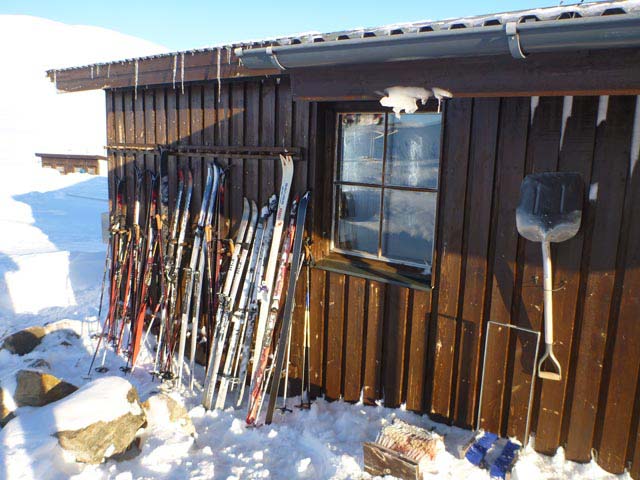
Climbing skins, which adhere to the underside of the skis to provide greater traction when going uphill and are then removed for descents, may be used for steeper ascents but are not always required.
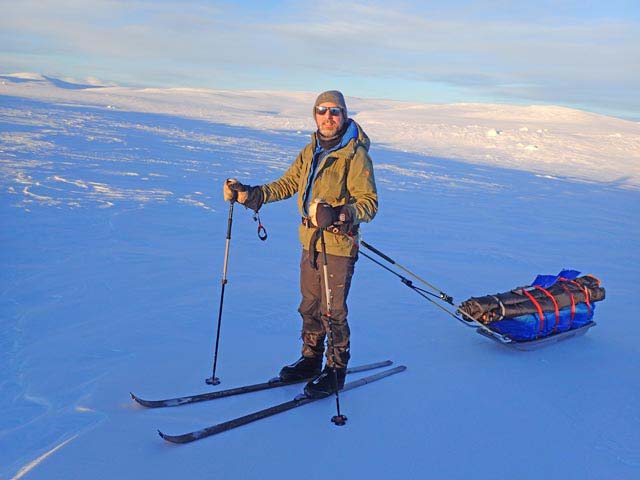
Alpine Ski Touring (Randonée Skiing):
Elsewhere, such as in the European Alps, “ski touring” will often mean “Alpine ski touring”, that is much steeper ascents, either done as day tours or sometimes as part of a point-to-point trip. The Swedes call this a “topptur”, or “peak tour”. The skis and boots used are more similar to downhill skiing, but with a heel which can be freed for climbing and fixed for descents (unless using Telemark equipment, when the heel is always free even when skiing downhill). Skins are used for the ascent, which may take several hours, and the skins are then removed for a thrilling off-piste trip to the bottom.
This is also sometimes called “randonée” and is the type of skiing featured on our Alpine Ski Touring in Lyngen experience in the far north of Norway.
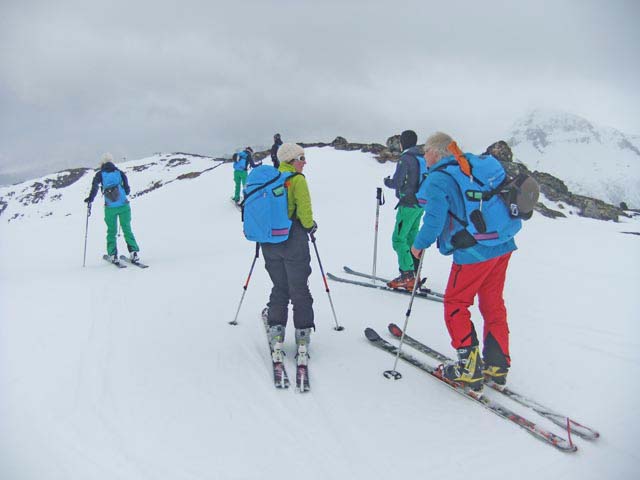
Finally, a quick note on snowshoeing:
Sometimes considered the poor relation to cross country skiing, we believe snowshoeing deserves to be appreciated as an excellent option for moving around in winter. You may not be covering the same distances as you would on skis (depending on snow conditions, when snowshoeing around 1-2km/hour would be typical), but snowshoeing requires no previous experience and also allows you to travel through terrain which may be unsuitable for skis.
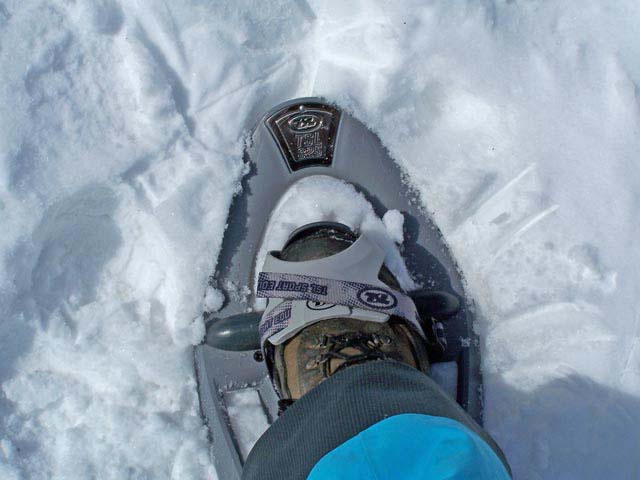
Our Snowshoeing in the Hossa National Park in Finland is a dedicated hut-to-hut snowshoe tour, while snowshoes are also available to borrow for self-guided excursions at many of our other winter experiences.

Still confused? Quite possibly! But rest assured that whichever option you choose, they’re all great fun and wonderful ways to experience the stunning winter landscapes of Sweden, Norway and Finland! You can compare our range of cross country and ski touring experiences to help you choose the most suitable tour for you, and of course don’t hesitate to contact us with any questions!
